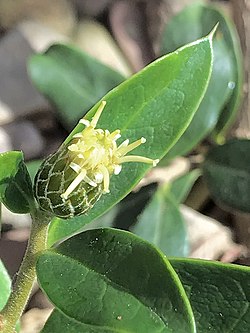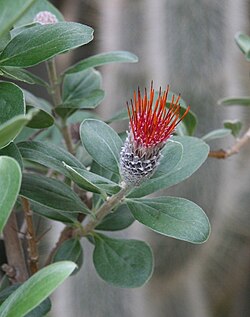| Barnadesioideae | |
|---|---|
 | |
| Chuquiraga oppositifolia | |
| Scientific classification | |
| Kingdom: | Plantae |
| Clade: | Tracheophytes |
| Clade: | Angiosperms |
| Clade: | Eudicots |
| Clade: | Asterids |
| Order: | Asterales |
| Family: | Asteraceae |
| Subfamily: | Barnadesioideae K.Bremer & R.K.Jansen |
| Tribe: | Barnadesieae D.Don |
| Genera [1] | |
Barnadesioideae is a subfamily of flowering plants in the aster family, Asteraceae. It comprises a single tribe, the Barnadesieae. The subfamily is endemic to South America. Molecular evidence suggests it is a basal clade within the family, [2] [3] and it is monophyletic. [4]
Contents
The subfamily includes species of annual and perennial herbs, shrubs, and trees up to 30 meters tall. Most are likely pollinated by hummingbirds. [4]







